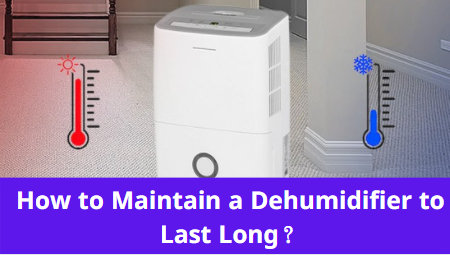A dehumidifier is a moisture-sucking device from the atmosphere that effectively draws air inside and releases humid-free air, collecting the water droplets in the air. Similar to some other home gadgets, this is an essential device to have for areas with high humidity. This makes it something that is not bought often however, there are ways for how to maintain a dehumidifier to last long. Nevertheless, the first step to increase the lifespan is to identify the type of dehumidifier. The types are.
Types of Dehumidifier
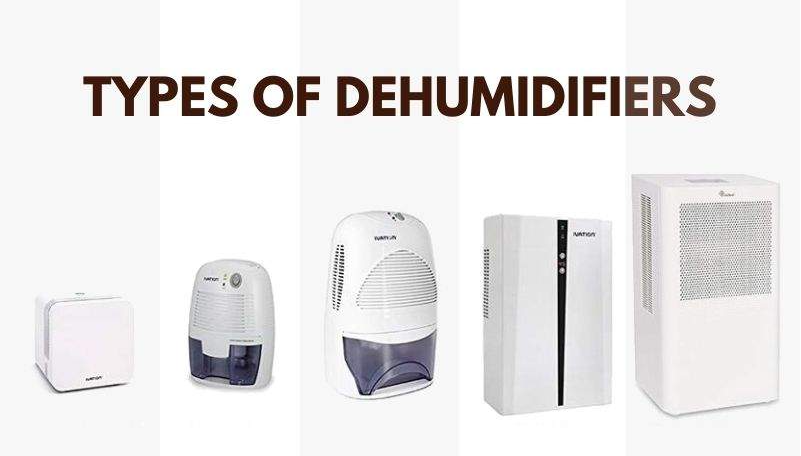
A dehumidifier is classified into 2; refrigerant or the refrigerator type and the desiccant dehumidifier and further categorized as portable, mini or large units.
Refrigerant Dehumidifier
It works similar to a refrigerator and is named after it. This type of dehumidifier functions by condensing the moisture from the air. The air is drawn into the unit and forced over the cold evaporator coils. Through this process, the moisture is collected in the tank or drained out through the pipe and the dry air is vented out.
Desiccant Dehumidifier
This type of dehumidifier works by utilizing materials that can absorb the moisture like silica gels as it is capable of absorbing the humidity directly. The air is released back once the moisture is sucked.
The silica gel used for the process can be recycled (which is a plus point) when it is exposed near the heat and allows you to use it again. Compared to the refrigerant type, the desiccant dehumidifier lasts longer. The only thing that will require a replacement is the battery.
In a nutshell, refrigerant dehumidifiers are usually more long-lasting than this one. In general speaking, a dehumidifier lasts for 3 to 5 years on average if it is well-maintained.
What is the RH Factor?
The RH or Relative Humidity factor is the amount of water vapor present in the air. Overall, in a building, the RH is around 40 to 50 percent. It is important to maintain the RH level in the home within this percentage.
On average, 15% of the moisture is produced on a daily basis in a household including all the house chores even with the breathing and sweating too. This may vary depending upon the number of individuals, the size of the room, air flow, and the capacity of the dehumidifier most importantly.
When the humidifier is operated for the first time, it will work gradually but try to run it as long as the RH level falls below 60%.
How to Maintain a Dehumidifier to Last Long?
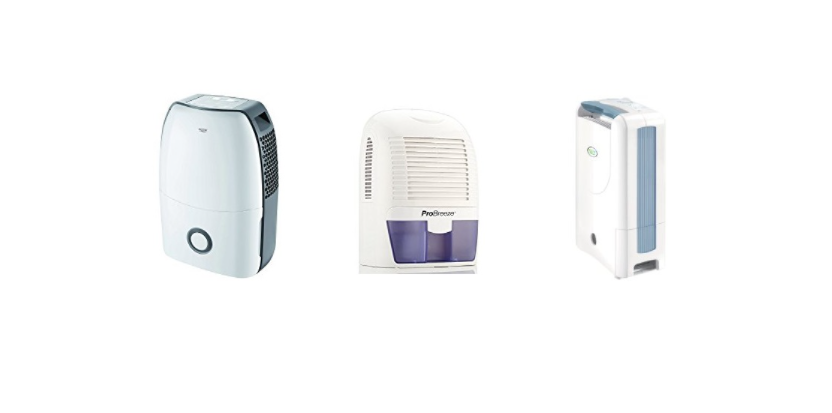
Here are some ways through which you can make your dehumidifier long-lasting by maintaining the unit. When it is used all day long and each day, the life span of the unit decreases but if maintaining activities are conducted regularly, it can increase the life a bit. The core to maintain the dehumidifier is the draining system and the regular filter replacement.
How to Get Dehumidifier to Drain Through Hose?
The dehumidifier has a tank attached with it to collect the water droplets while air filtering takes place by a dehumidifier hose. It will work once the drain is filled completely. There are three methods through which the dehumidifier can be drained.
1. Sink Method
As you can take a hint by the name, this method can be done involving the sink. For that, the dehumidifier must be installed next to a sink or above it. The draining hose of the unit must be connected to the nearby sink drain because without that, it would not work. This method restricts the movement of the dehumidifier which could be a drawback.
2. Deplete Connection Method
This method works by removing the water storage container, a drain hose is attached to the storage container of the dehumidifier. It is easy to drain through it as after attaching the drain hose, all you have to do is direct it to the place you want to drain the water. When it is empty completely, fix it back to your unit.
3. The Drain Hose Method
This process is more convenient as it empties the tank automatically by utilizing the drain hose. All you have to do is follow these steps.
- Unplug the Dehumidifier
Obviously, it can not be done if there is any electric power connection attached in order to prevent electric shocks.
- Detach the Unit’s Water Bucket
You have to be careful while removing it in order to prevent the spill. Detaching the container might sound like a difficult task but actually it is not as it does not require any tools for the process.
- Locate the Drain Hose and Hose Insertion
The container possesses a draining outlet to which you can attach the drain. Now, find the garden hose that matches the side of your dehumidifier outlet. Sometimes, a regular garden hose works perfectly.
- Push the Hose to the Hose Connector
Make sure the hose is attached easily to the unit. It might require a small twist on the hose, once it is done, you can easily proceed forward.
- Place the Hose to a Nearby Drain
Take the other end of the hose and place it to the nearest drain to constantly maintain the flow of the water. You can put it wherever you want the water to go like in the garden too.
- Reattach the Bucket
When the water draining is complete, detach the garden hose from the unit and reattach the container to the unit and turn on the power back.
Best Time of Day to Use Dehumidifier
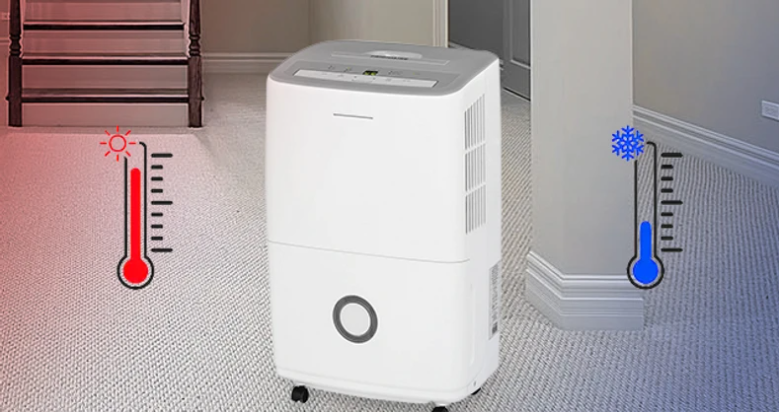
Well, with the high level of humidity in some areas might require you to run the unit 24 hours a day but it will cost you a lot. In order to identify what is the best time to use a dehumidifier is to know the extraction rate (the amount of air that crosses the unit). On average, a dehumidifier within a space operating correctly must be capable of extracting the air up to 55% relative humidity.
Keeping the requirement and the capacity of a dehumidifier, you can run it for 12 hours. You can turn on the unit to run straight for the time or into small intervals like 4 hours in the morning, in the afternoon and at night. In order to make it more cost effective, you can run it from 10 pm to 7 am. This is because this is the time when the rates are low and people at that time are consuming less electricity.
Tips on Maintaining a Dehumidifier
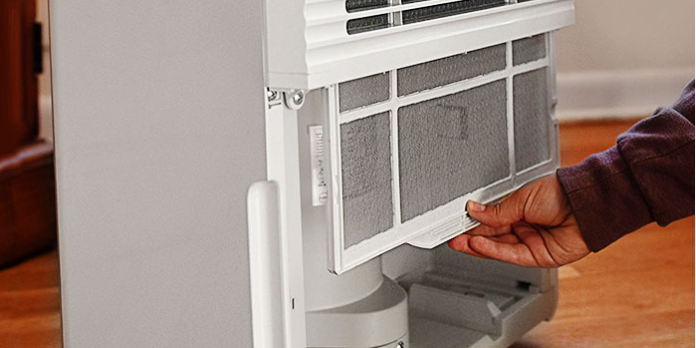
Safe Level to Reduce Moisture
The modern dehumidifier possesses a part known as humidistat whose core purpose is to maintain and control the moisture from the air. It works at a low level moisture however, could be the reason to reduce the longevity of the unit. It is recommended to set a dehumidifier to the safe level only.
Filter Replacement
Another feature to maintain the health of the unit is to replace the filters from time to time for the optimal performance. The filters need proper cleaning every 3 to 6 months as it prevents the contaminated air getting back to the atmosphere.
Regular Cleaning
The moisture flourishes the growth to molds and mildews. If the water is not removed from the dehumidifier then it is more likely to breed the contaminated substances. This could give rise to respiratory problems.
Avoid the Compressors Short Cycling
The frequent turning off and on of the compressor is the short cycling. This leads the unit to overheat and can damage the compressor. If you have switched off the unit then you have to wait for it at least 10 minutes before restarting again. This minimizes and equalizes the pressure in order to prevent the damage.
Cleaning of Air Channels
This is a part of regular maintenance in which you have to clean the channels of air for inlet and outlet. You can use a soft bristle brush that can easily reach the smallest area and removes blockage.
Condenser Coil
The working of the condenser coil is affected during the cold weather specially if it is snowing or chilling conditions. This happens because of the ice frosting over the coils that causes the malfunctioning. In this condition, you have to turn off the dehumidifier and wait till the ice melts completely from the coil. If it still does not work, consult a professional and get it fixed.
In the End
Dehumidifier decreases the dampness from the air and is an essential gadget for the humid areas. Many consumers, on the other hand, do not want to deal with the ongoing trouble of emptying humidifiers or connecting hoses. Though it may appear to be a difficult task at first, we guarantee that the clean air free of dust, mould, mildew, and moisture, as well as the additional health advantages of asthma, allergy, and sinus relief, are well worth purchasing a dehumidifier and correctly setting it up.
